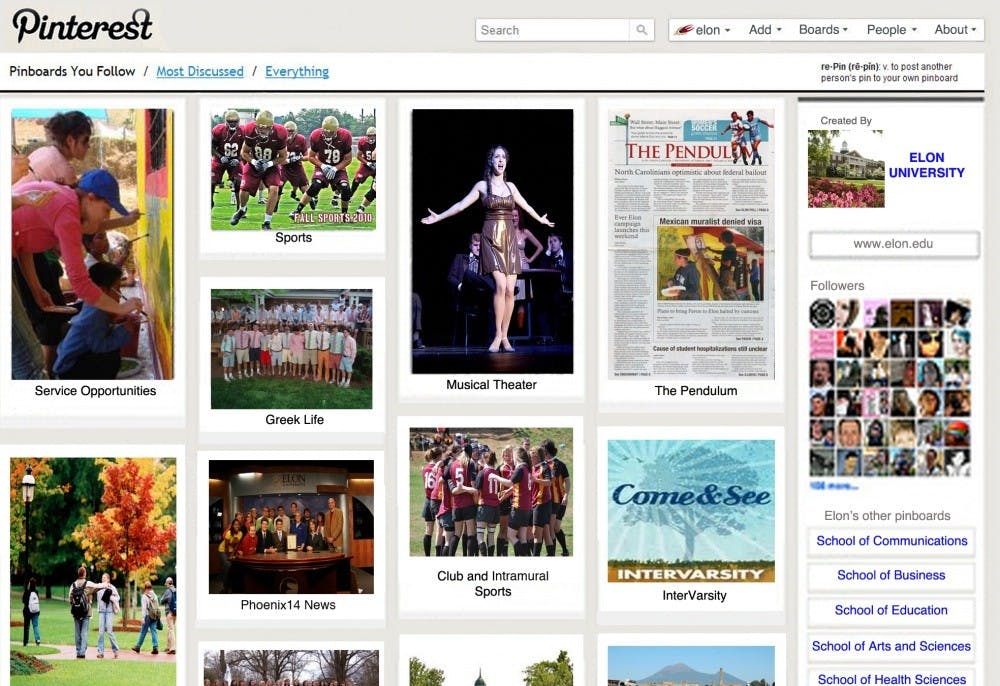With Twitter and Facebook, it seems like life events do not happen unless a status update announces them. But the world of social media got a facelift, with the 2010 beta launch of digital bulletin boards that are gaining momentum on the Internet.
Pinterest, a network of users who post photos to personal collections, or "boards," is changing the way people interact on the Web. Pinners are able to access and express multiple parts of their personality, an advantage other social networks do not have.
"It's seeing people from a different side," said sophomore Alexa Carlin. "Like seeing them from what they like rather than just pictures of who they are."
When Carlin started using Pinterest in September, she said it was not the social phenomenon it is now. Its popularity at Elon exploded during the semester and now, most of her friends are pinning.
Students are not the only ones taking notice. Michelle Ferrier, associate professor of communications, requested an invite, hoping to discover how the interface helps users manage multiple interests.
" Social media has become more specific in allowing each of us to have multiple online identities," Ferrier said. "We are complex beings with multiple roles. Social media, like Google Plus and Pinterest, help us center our content around these multiple, dynamic niches."
Pinners are certainly able to function using multiple identities. Each user may create hundreds of boards based on any interest imaginable.
"On mine I have quotes, cute dogs, wedding things, preppy things, sorority life, sailing," Carlin said. "Anything that interests you, you can put a board together. The possibilities are endless."
But pinning is not just for fun. Carlin has put Pinterest to practical use, now that her entire sorority is interacting on the site.
"We (had) a philanthropy event 'Mr. Alpha Chi' and we were looking for a T-shirt design," she said. "So I was looking through Pinterest. It was a way that we would have a stack of choices and it was just fun to go through them all."
While browsing Pinterest, Carlin said she does not need to worry about some issues prevalent on other social networking sites.
"It's all user driven, where Facebook has advertisements on the side that are tailored to you, and Twitter has promoted tweets," she said.
Carlin also feels safer on Pinterest than on other sites, because she does not post pictures or information about herself. Rather, she links to other sites that have content or images she finds interesting.
Despite its differences from other sites, Pinterest still runs the risk of disconnecting younger users from reality.
"They are still teens struggling for their own identities, their own groups and their own place in the physical world," Ferrier said. "I would expect those same identity struggles will cause public vs. private, me vs. us, friend vs. outsider and independence vs. group dynamics to show up online as well. And at times it can be a bit messy."
What she describes as "a visual RSS on steroids" has Ferrier concerned about young people taking social media for granted.
"Early adopters (of the Internet) were mainly adults who had already navigated their way through many identity issues in their younger years," she said.
But based on Pinterest's popularity, users young and old understand the opportunity it offers. Pinners can use the images they see on online stores, blogs, news sites and forums to create inspiring visual clusters, tailored to their multifaceted identities.
So prepare to add something new to your list of online activities. It's no longer just tweeting, poking and checking in. Happy pinning.


